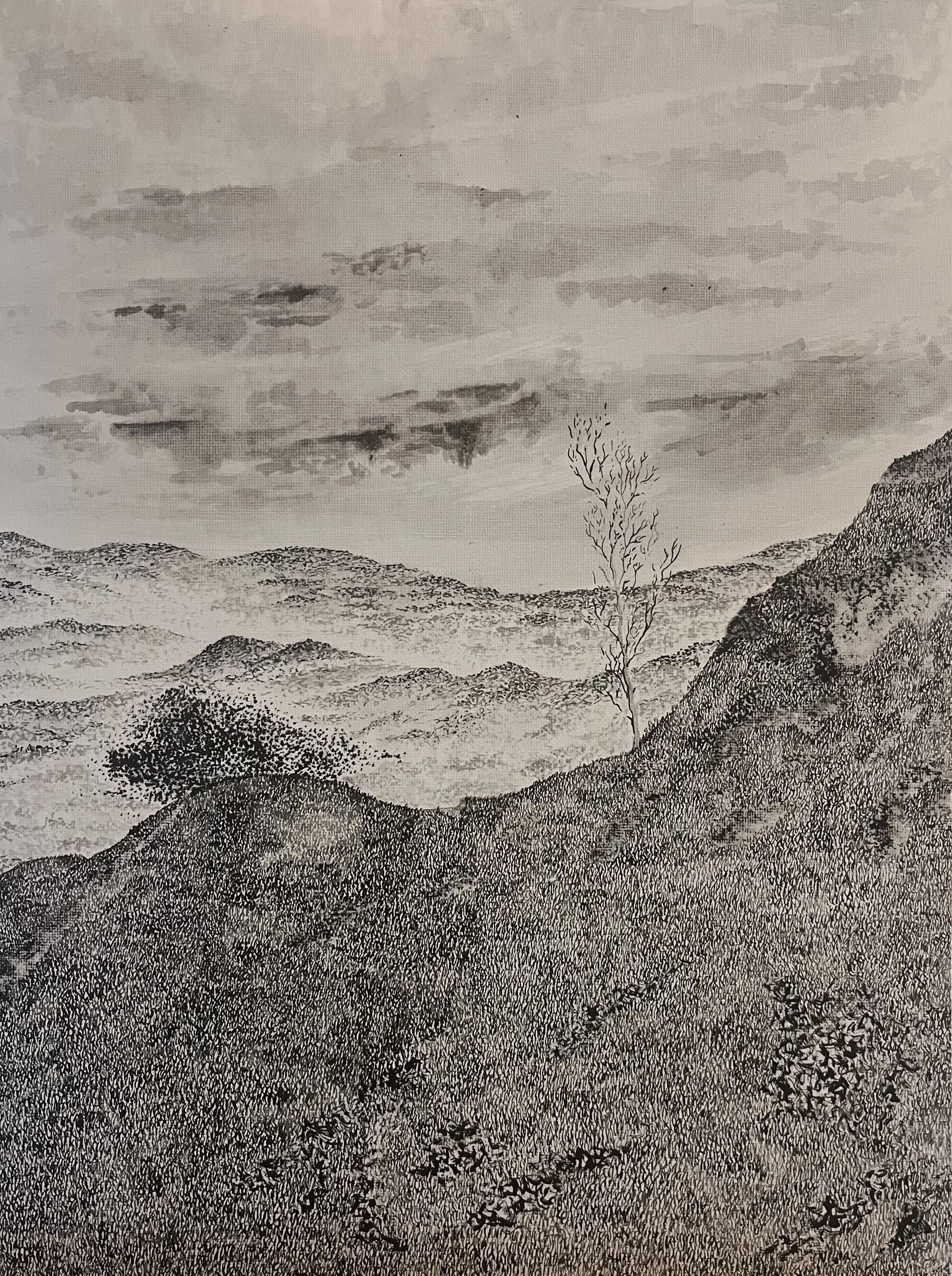Creag Bheag.
At the beginning of August, following my visit to Kingussie with my mum, I started a painting inspired by our walk up Creag Bheag. I wanted something to help me ease back into the flow of creating, which I felt I had drifted from slightly over the summer under the pressure of the research paper.
Almost at the top of the summit there is a solitary silver birch tree that, against all odds and the exposed nature of its location, has managed to grow on the side of Creag Bheag. It has somehow endured the unrelenting winds and winter storms, standing as a small testament to nature’s strength and stubbornness. The tree stayed with me for weeks afterwards. While it was my first time doing that walk, my mum had done it previously and, on both occasions, she had taken a photograph of the very same tree. There must be an unspoken draw to it, whether it is the setting or the fact it seems so unlikely for a tree to grow that close to the summit, and yet there it stands.
With this painting, the main focus was on exploring textures and mark making for the ground cover. Using an old paintbrush with split bristles, I moved away from small controlled strokes in favour of larger, more energetic marks to evoke the movement of the plants and foliage that carpet Creag Bheag.
I also tried to leave intentional areas of blank space for the rocks, rather than working into them too much, creating a colder contrast against the warm, buzzing foliage and the blaeberry bushes that seem to cover every inch of ground.
Originally, I had planned to leave the sky almost blank as a balancing contrast to the noise in the foreground. However, during a very pale ink wash, two dots appeared where something had splashed on the canvas previously and repelled the ink. To work with this, I textured the canvas by wetting the board and gently rubbing an eraser over the surface to roughen it. Once it dried, I painted minimal clouds to settle those marks into the sky. I am trying to leave the sky as it is, without darkening it further, which goes against my usual instincts but feels necessary to preserve that contrast.
I am really pleased with how the mark making in the foreground has turned out. There is a noticeable difference compared to some of my earlier paintings, with a stronger focus on the energy and emotion of the place rather than a direct translation of the photograph.
For the tree, which was the original spark for the piece, I deliberately chose not to overwork it. Silver birches often have a reflective quality to their bark, almost like a soft mirror against a clouded sky. There is a lightness and slightly translucent energy to them that I wanted to hold onto. I built it up with very diluted ink washes and only a few small details, which has helped give it a slightly transparent, ghostly presence.
I approached the valley and plateau below in a similar way. Instead of painting a defined mountain range, I used repetitive dots to build up the shadows cast by the distant hills. This allowed me to focus on the shifting light and shadow that covered the plateau rather than the textures of the far off landscape.







